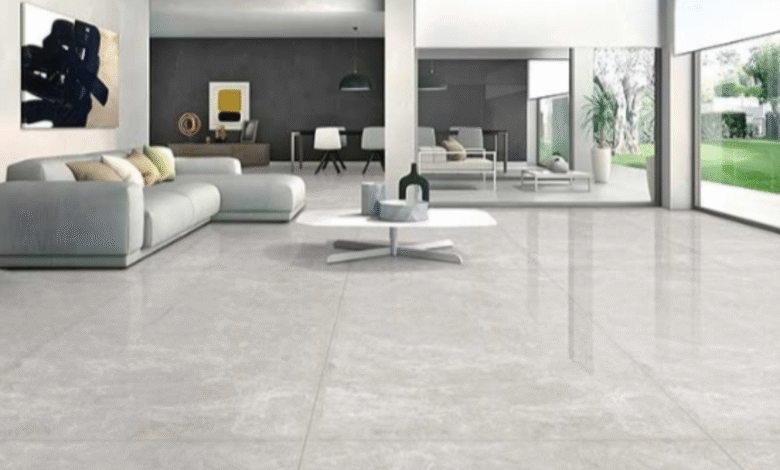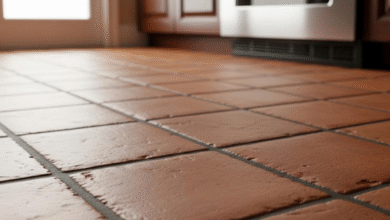The Pros and Cons of 3D Floor Tiles for Living Rooms

In a way, the living room is the first impression that your guests get of your home. So, when planning your living room, consider how furniture, lighting, and decor come together to uplift the space. Many homeowners are looking for bold designs, and for that, 3D floor tiles with their striking designs are transforming how modern living rooms look and feel.
Before investing in 3D tiles or adding them to the prospective list of living room tiles, it’s worth looking closely at their strengths and limitations. This way, you can make a beautiful and practical choice for your room.
The Pros of 3D Floor Tiles for Living Rooms
3D floor tiles are placed in a way that creates depth and dimension. This helps in creating an illusion where the floor surface extends beyond its physical limits. Their advantages are:
● Creating a Visual Difference
The biggest appeal of 3D tiles is that they can stand out as tiles. If you want a feature wall or feature element, you can add 3D tiles as extra decor. You can also combine it with subtle walls and minimal furniture. If you choose collections like Impero or Altagloss from premium suppliers like Simpolo Tiles and Bathware, you can create an almost gallery-like effect. The visual depth can make a small room look larger and give it added personality.
● Bringing Versatility in Style
3D tiles come in various styles, from bright, high-contrast illusions to smoother, more textured looks. You can pick something dramatic to make a statement or opt for something more subdued that goes with your furniture and other decor. Some stone and wood-look designs can help you attract the visual warmth of natural textures without going for the maintenance that natural stone or wood requires. For example, a wood-effect 3D tile comes with the cosy feel of timber, but along with that, it adds the easy cleaning of a ceramic or vitrified surface.
● Going for Durability and Maintenance
High-quality 3D tiles are often designed using porcelain or vitrified materials. The reason is that they resist scratches, stains, and moisture. This stylistic choice is important, especially if there are high-traffic living rooms. They are not only durable but stain-resistant, making maintenance easier with a quick sweeping and occasional mopping to keep them looking fresh.
The designs are baked into the surface with advanced printing technology. This means it won’t fade or wear off quickly. This is especially true for products from premium suppliers, where quality control is part of every step.
The Cons of 3D Floor Tiles for Living Rooms
3D tiles work best for a living room with an artistic edge. They’re great for open-plan layouts, and so, when the living area flows into the dining space, placing these 3D tiles on a floor can create a cohesive zone.
Some disadvantages of these tiles are:
● Might Not Suit Every Style
Even though 3D tiles are interesting, they can take over a room, especially if the furniture, decorations, and other tiles are also bright, shiny, or have geometric patterns. A busy 3D floor tiles can make your living room feel crowded if you have patterned rugs, colourful pillows, and detailed curtains.
● Installation Needs Precision
When using 3D tiles, patterns must align perfectly. In such a case, the installation has to be done by skilled professionals. A small error in layout can ruin the visual effect and make the pattern look uneven. This means slightly higher installation charges as labour costs rise compared to simpler tile designs.
● Trend-Dependent Appeal
3D designs are bold choices, and currently, as statement pieces, the 3D tile trend is on the rise. However, trends can change. This cutting-edge design style may not be retained in the next 10 years. So, choose a classic, timeless base tone with your 3D design. You can go for
time-tested classic design choices like marble whites or soft greys. The pairing can keep the design bold and yet futuristic.
● Higher Initial Cost
3D tiles have surfaces that are treated differently from regular tiles. They undergo advanced printing and design processes, which make premium designs significantly more expensive than standard tiles. However, the visual dynamic that 3D tiles bring can make the investment worth it.
How to Style a Living Room with 3D Tiles?
The key to using 3D tiles well is balance.
- You can make the floor stand out with 3D tiles, but then you have to keep walls and
furniture in neutral shades. - Pairing a bold 3D marble-effect tile from collections like Marmorica from Simpolo
Tiles and Bathware, for example, with cream or beige upholstery allows the floor to
shine. - Natural light can enhance the illusion in 3D tiles. However, you can opt for soft, warm
lighting in the evening to create a cosy atmosphere. - Rugs can be used strategically to soften areas without hiding the tile’s design
entirely.
Conclusion
There has to be a balance when you are opting for standard living room tiles and also going for the bold personality of 3D floor tiles. The right balance will define the taste and lifestyle you want to show. They are dramatic design choices, and so, there needs to be planning involved in styling and precise installation to keep patterns aligned.
You can also take the help of digital tools for design preview and personalisation, which will eventually help in creating a living room floor that actually showcases your design statement.





One Comment